A complete observation of the Law of Nature must engage with Nature in its entirety.
It is difficult to critique something that has given your life a stream of immeasurable benefits. But if one critiques what they care about then it needs to be first said that I remain highly grateful to Vipassana meditation (as taught by S.N. Goenka) for what it has gifted me over the past decade. My first course in 2005 transformed my outlook on life (and I say that as one who is wary of a word that is often overplayed in a society seeking easy fast-tracked “transformation”) and subsequent courses I have sat and served have, on each occasion, delivered profound learning or catharsis.
However, in recent years, and having now completed doctoral research on meaningful nature experience and human~nature connectedness, I have been forced to reflect on personal experiences with this Art of Living and feel compelled to share what I believe remains a notable oversight, possibly preventing the technique from reaching its full potential among adherents.
A Dissociative Practice?
The late S.N. Goenka is to be lauded for his decades of tireless dedication in bringing the Vipassana meditation technique (as purportedly taught by Siddhartha Gautama the Buddha) to a global audience. Whilst criticisms have been levelled at the teaching (e.g. particularly the strict regime of the 10-day silent courses, firm moral standpoints or theoretical interpretations), these points of contention are usually over-inflated, factually flawed or, in focusing on the details of course (e.g. “harsh jail-like conditions”), obscure the essence of the teaching.
Vipassana can seem like an austere path and the charge of it being a “dissociative practice” is something which is often levelled at meditation in general – that it emotionally detaches or anesthetizes one from full-ranging feeling of the world. Again, those familiar with meditation and who have experienced its benefits would find this claim to be misguided. On the contrary, in increasing awareness, attentive observation and inner balance, one becomes more engaged with life in all its variety.
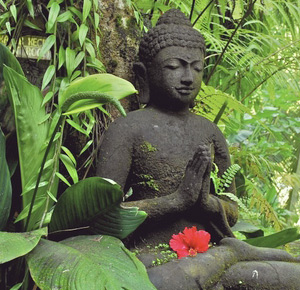 But is Vipassana dissociative with regards to non-human Nature?
But is Vipassana dissociative with regards to non-human Nature?
This warrants a closer look. Singh (2007) is critical and believes that:
The wonders of the natural world, the stars in the night, the raindrops and the flowers and the waves in the ocean are considered transient phenomena and not worthy of a second look. Enjoying a sensory experience is disparaged as attachment to the senses.
This again is not my experience of Vipassana. Indeed, natural phenomena are transient but it is erroneous to confuse enjoyment with attachment or to suggest that the beauty of Nature is not worthy a second look. One observes, one enjoys, one appreciates (often more thoroughly as one is more present-minded) but one is equally aware that this enjoyment is temporary and will, in time, also pass. Everything in life is ephemeral and changing.
But that fact that misinterpretations like this can be made by students suggests there is some confusion.
Where is Nature in the Law of Nature?
Vipassana is a pragmatic and rationally-grounded technique that aims to understand the Law of Nature through self-observation. To this end, the teaching of Vipassana adopts a scientific-type approach by creating experimental lab-like conditions (indoor meditation) which serve to isolate and control the (outdoor) environmental variables that would otherwise influence and distract the subject (oneself) in being able to objectively observe changing bodily sensations (through honing one’s awareness).
S.N. Goenka himself acknowledges that despite Buddha meditating under “open air, open sky” that the beginner meditator is not “mature enough” to sit outdoors. Goenka stresses that inexperienced meditators are likely to be lured into distraction or be confused by errant sensations on the body as caused by, e.g. wind or changes in temperature outside of the body.
The additional concern is that meditators will get caught up in sensory outdoor delights and begin to yearn for (or imagine) certain aesthetically pleasing experiences, losing the balance of the mind or become overly attached to types of (past) experiences. In scientific terms, the experiment would be invalidated due to confounding external influences. The logical recommendation is therefore to train the observation of one’s bodily sensations in the isolation of the indoors. This is understandable.
However, for any experiment to become a credible reflection of reality, it needs to be eventually integrated into the dynamic complex world which has a multitude of interlinking and unpredictable variables. Vipassana recognizes this to some extent: the essence of the practice is to take this mastery of the mind – this equanimity toward sensory experience – into everyday life in order to come out of the continuous cycles of desires and dislikes which fuel our everyday unhappiness and suffering.
But something seems amiss: is the Vipassana ‘experiment’ incomplete?
Goenka emphasises that beauty can only be appreciated when integrated (e.g. a head of lustrous hair is beautiful, a single strand of hair in your food far less so) – and uses this argument as a case against modern reductionist science. Yet Vipassana itself seems to lack re-integration back into Nature: for the aspiring student, there is no guided opportunity – nor encouragement – to ‘field test’ one’s indoor experiment in Nature before implementing it into the grand scale of the animate world. Students may inevitably try outdoor meditation on their own so why don’t Vipassana courses pre-empt that with seasoned guidance on how to artfully employ the technique immersed in non-human Nature?
This is particularly because Goenka highlights the presence of Nature in all the key moments of Gautama the Buddha’s life. Other scholars have also remarked that Gautama happened to be born outside under a tree (his mother fell into premature labour), his first self-initiated meditation as a child occurred under a tree, his first sermon was taught under a tree and, most importantly, at the age of 35, he became enlightened under a tree. Finally, aged 80, Siddhartha died peacefully under a tree. In other words: the pivotal moments of Buddha’s life all transpired under a tree.
In the face of such a striking trend, S.N. Goenka agrees that the Law of Nature is evidently important in one’s life but, curiously and paradoxically, continues by saying that the study of this Law of Nature on the outside will never get you enlightened. According to Goenka*, it is instead the study of the Law of Nature on the inside of one’s self – our own bodies – that is necessary. It is on this point that I must differ with Goenka:
It is the attentive study of the Law of Nature on the inside and outside – in equal measure, the middle way – that is absolutely necessary.
It must be both – each supports and invites ‘the other’.
Can the Law of Nature be truly understood and embodied without tuning into – and participating with – guidance manifest in Mother Nature herself?
Conversing with Nature
There are many insights about one’s self which can be elicited by the watchful contemplation of Nature. Nature can be the mirror of the psyche and can cast up telling reflections of who we are and where we are in life. Ancient philosophers (e.g. Anaxagoras, Plato), modern phenomenologists (e.g. Goethe, Merleau-Ponty) and ground-breaking physicists (Newton, Max-Planck, Wheeler, Einstein) all shared the wisdom – cultivated through experience – to truly know that we are not just mere observers of Nature, but active participants.
Similarly, central figures of the world’s major religions and philosophies all spent extended time in wilder nature to elicit their realisations: Rahman in the jungle, Moses on Mount Sinai, Jesus in the desert and garden of Gethsemane and Muhammad in the mountain cave of Hira. Greek philosophers conversed in the Groves of Academe and Isaac Newton had his epiphany of gravity underneath an apple tree. Indigenous groups use sacred natural sites for both insight and ritualistic cleansing and some Native American groups ceremonially place their backs up against trees in order to connect to a ‘higher energy’/Source and receive wisdom. Collectively, this speaks volumes about the agency of nature in supporting human maturation. Nature is clearly the common denominator.
And so it was for Buddha too – not only did his enlightenment come under a tree but many accounts indicate that Buddha’s whole life was inspired by his surrounding natural settings: ‘The Buddha Among the Birds’ is just one of 550 stories in the Jataka tradition that narrates Buddha’s life among animals, that formed part of his revaluation of the human~cosmos relationship amidst the prevalent Indic civilisation spawned by the arrival of the more nature-fearing and exploitative Vedic Aryans of that era.1
“The world is wholly inside, and I am wholly outside of myself” ~ Merleau-Ponty
We commune with Nature through what may be best characterized as a sense of interrelating – a kind of mutualism that is difficult to pin down. We are in an ongoing conversation with the world, whether we are aware of it or not. Yet the more attentive we are to this dialogue, the more likely we will recognize that we are creating the world as we go. We come to realize, as the Zen Masters did, that attention is the blade for consciousness, the instrument. Focused attention performs an incision capable of piercing the surface of ‘hard’ material Nature, revealing an underlying softness that appears animated with its own intelligence and consciousness. Early Taoist thought alluded to this Tao as “The Great Way” such that when one is lost in Tao, one is living “naturally” (similar to the concept of “Dhamma”).
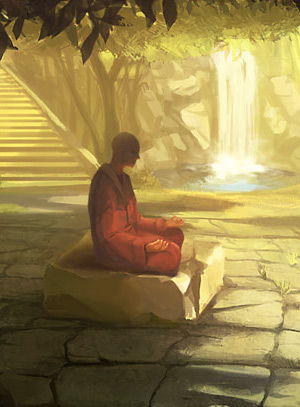 There is an inescapable reciprocity to our observation of Nature: we create living, pulsing, changing bonds such that all our seeing is simultaneously objective and subjective – we are central participants to what is seen.2 So what is seen is not merely a ‘thing’, but rather meaning. In other words, Nature’s ‘things’ conspire with our consciousness (thoughts, emotions) to bring us into conversation with symbolism, myth, intuitions or other I resonant ways which we are yet to fully understand.** However, we sense that the quality of our interactions with Nature are intimately linked to our level of present awareness.
There is an inescapable reciprocity to our observation of Nature: we create living, pulsing, changing bonds such that all our seeing is simultaneously objective and subjective – we are central participants to what is seen.2 So what is seen is not merely a ‘thing’, but rather meaning. In other words, Nature’s ‘things’ conspire with our consciousness (thoughts, emotions) to bring us into conversation with symbolism, myth, intuitions or other I resonant ways which we are yet to fully understand.** However, we sense that the quality of our interactions with Nature are intimately linked to our level of present awareness.
Nature delivers insight. I have heard anecdotes from Vipassana meditators who received needed inspiration from the stillness of the mantis seen in the toilet, the strength of an eland bull in the adjacent reserve, the soft touch of a passing butterfly, the sighting of the ever-changing chameleon, the melodic song or curious gaze of a bird or the realization that mosquitoes are also deserving of compassion. Gazing up at the revered Bodhi Tree, I also experienced such an epiphany. Animate earth is indispensable in aiding Self-realization.
In understanding impermanence, Vipassana also invites one to transcend ego and be ownerless of their experiences (Anattā: “no me, no I, no mine”). Similarly, Nature can serve as the “The Great Leveller” – reigning in the human ego to be redefined and rediscovered as belonging in relation with this perennial earthly ‘other’. Studies on awe and wilderness show that participants experience “diminishment” or “small self” – in the face of Nature’s grandeur, the concept of “I” assumes much less import and one feels more altruistic, generous and a natural part of the greater community of life.3
Advanced Vipassana courses should therefore include outdoor sittings and more experienced students (capable of maintaining self-awareness without distraction) encouraged to intermittently meditate beneath a tree. Doing so acknowledges not only that we participate with reality in its entirety but that Nature is a key role player in our own evolving prospects for Self-realization.
This is Vipassana’s ‘missing link’ and an invitation for it – and many other schools of meditation – to step out of a precarious anthropocentrism and into a union with all of Nature as Buddha apparently envisaged.
Surely, Enlightenment is relational and participatory. It is to ‘Know Thyself’ and to ‘Know Thy Nature’ – all of it in its wholeness.
Buddha’s Enlightenment
Artistic images of Siddhartha Gautama’s life story at the Global Vipassana Pagoda (Mumbai, India) show him conversing with elephants, monkeys, deer, birds and other wildlife at various times while sitting beneath a tree or wandering the landscape. It is said that animals beared witness to Buddha’s testimony and become dialogic partners in his ensuing discourses.1
Buddha said, ‘…Seeking the supreme state of sublime peace, I wandered …until …I saw a delightful forest, so I sat down thinking, “Indeed, this is an appropriate place to strive for the ultimate realisation of … Nirvana” ‘1
And as Buddha approached his moment of enlightenment under the Bodhi tree, it is said that Mara, the evil one, tried to prevent this great occurrence. He tried to frighten him with storms and demon armies but Siddhartha remained calm. Mara then sent his three beautiful daughters to seduce him but he still remained unfazed. Finally, Mara tried to trap Siddhartha in his own ego by appealing to his pride. This, too, failed.4
Having conquered all temptations, Siddhartha touched the ground with one hand and asked the Earth to be his witness.
And so their conversation continued…

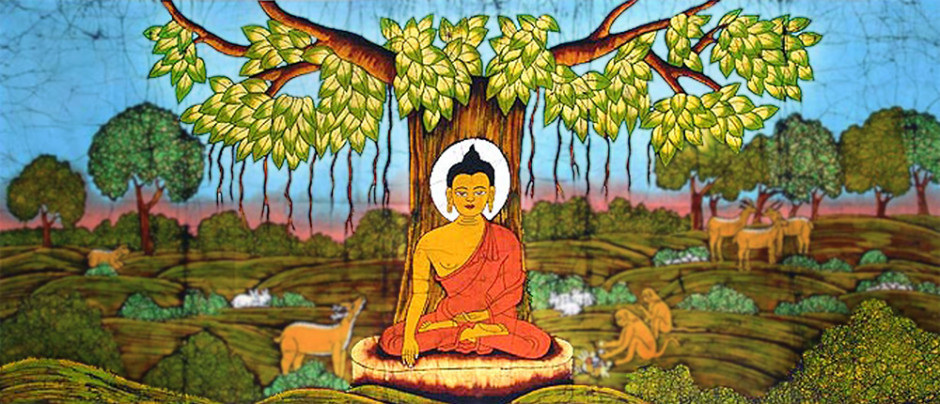

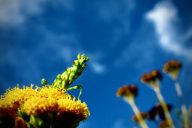

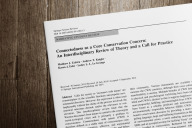
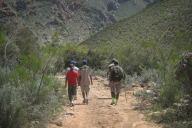



8 Comments
Insightful article. Something i have observed for many years. At nearing the end of my last course some 15 years ago I had decided to not do another vipassna retreat based on this premise. After sitting under a tree at 4am waiting to ring the bell to begin the day for all participants, I experienced the tree ‘wake up’ and begin breathing. It was a moment I realised that the observation of myself in the ‘outside real’ world was where my greater insight occurred. From that point I made a practice of mindfulness in each moment in my daily life particularly in communion with nature. Observing my reactions and sensations to all that Mara sends my way. Of course the level of distraction determines the focus giving credence to the inside vipassna model. For me it’s a more fluid, integrating way of being.
Thanks Jac for sharing this. Sounds like an incredibly powerful experience – fascinating. Admirable also that you’ve been able to integrate mindfulness and observation into everyday ‘outside’ life. Fluid indeed.
Blinded by Science – the recent book by Matthew Silverstone also looks at the health and psychological benefits of contact with trees. Read preview…
Hi Matthew,
I loved your article. Can you tell me, do you know of any Vipassana retreats or retreat centers where they do indeed facilitate this type of outdoor meditation and communion with nature?
Thank you, Chris. It depends where you are in the world but there are increasingly various meditation and retreat centres that encourage closer and more integrated communion with nature as part of the practice, although this is not Vipassana specifically. Vipassana as taught by the late Sri S.N. Goenka follows the same format around the world and whilst centres are often set in attractive natural surrounds, the formal practice is only indoors. In terms of other Eastern practices, the only ones that I have consistently seen performed outdoors are Qi Gong and Tai Chi.
Buddha in his previous lives did meditation so he was well established in it and he could do meditation under a tree without getting affected by outside nature and full concentration in the sensation he is feeling in his body. But we normal ppl have reached that level and level i think u haven’t reached to that level as well. If you would have then the wouldnt hv written this blog. So I suggest you to do meditation inside your house to reach high level of concentration and purify the mind in deeper level. If you love nature then u can just observe the nature and observe the sensation u r having.
Hi Ravi, thank you for this feedback, although you may have missed or misunderstood my point which was simply to suggest that our meditation practice may well be enhanced or deepened by sitting in (and communing with) nature from time to time. As humans we evolved for tens of thousands of years embedded with/in nature – there was no indoors. So I certainly appreciate your point and will continue to meditate – but will do that both indoors and outdoors in the hope of reducing the sense of artificial separation between humans (i.e. myself) and nature. Metta.
Well said, good article.
I need to point out however that the Goenka program’s focus is on getting as many people into learning to do Vipassana as possible (aiming for the first two levels of awakening: stream entry and once-returning) and is designed to be most suitable for beginning lay students. The purpose is mainly to bring in ordinary “busy” people to the practice. Vipassana is so deep that even what are considered the more advanced (old student) courses tend to be simplified and made as easy as possible. I personally believe this is necessary and has been a good thing as it helped revive Vipassana because it almost disappeared because over time it came to be (wrongly) believed that it was too difficult for most people. The goal of the Goenka movement is largely to make Vipassana accessible and doable for “beginners” and this includes avoiding all possible distractions including immersion in natire (like you mentioned) and This is why meditation in natural places is not highlighted in the Goenka system.
This does not mean however that you cannot go on to meditate in nature once you reach a certain level of discipline and ability. Also there are closely related meditation methods within Vipassana such as the forest tradition in Sri Lanka, Thailand etc. (Most famous is Ajahan Chah) that focus on meditation and Nature.